Wood flooring vs laminate: Which is the best option for you?
When it comes to wood flooring vs laminate, both have their pros and cons. Here, we take a look at what they are to help you decide which will best suit your needs
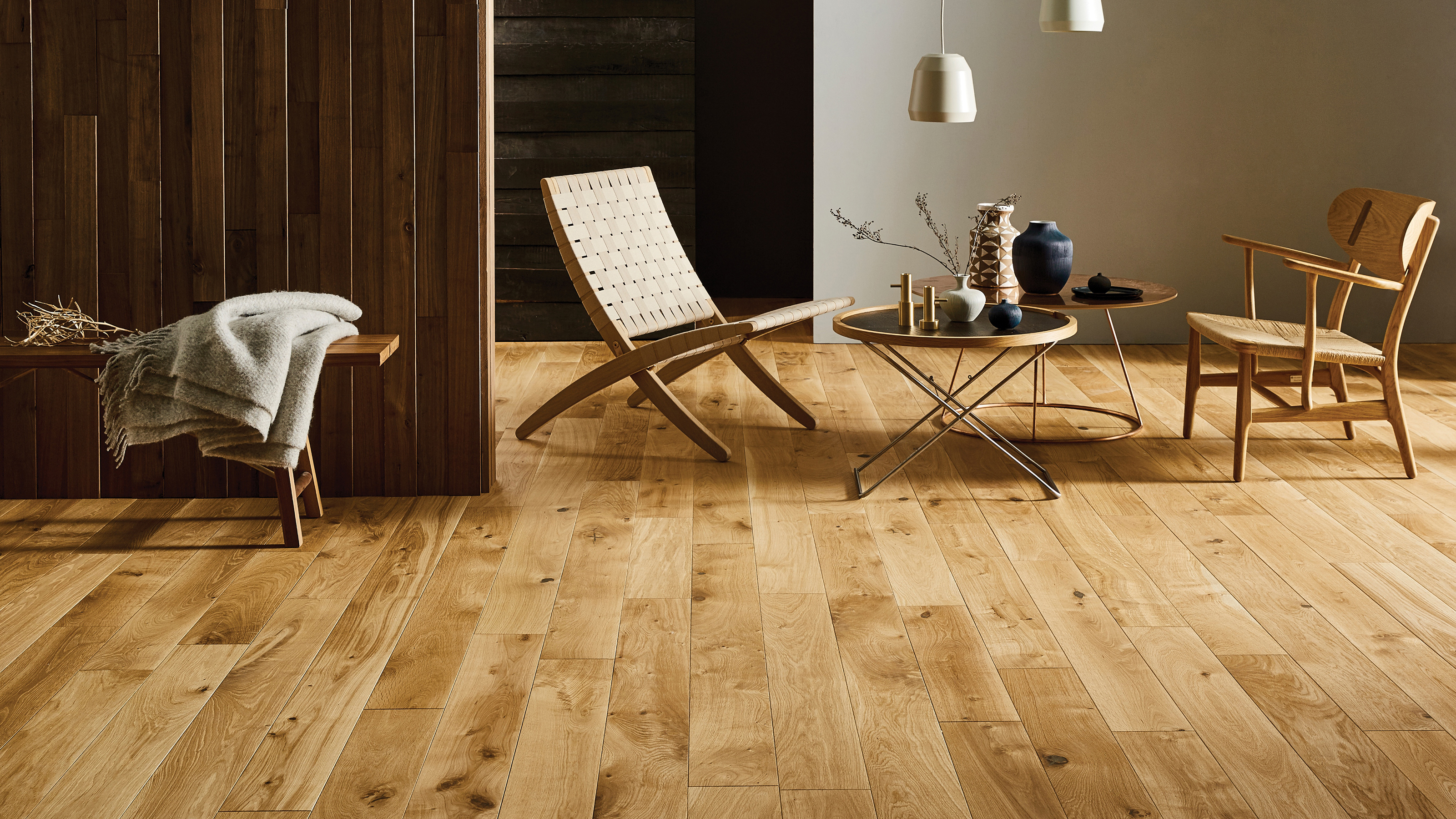
Wood flooring vs laminate — this is a surprisingly common dilemma faced by those fitting new flooring into their homes. Both have advantages and disadvantages and knowing what these are will help when it comes to making the right decision.
While there are, of course, many different types of flooring to choose from, both wood flooring and laminate tend to be popular with homeowners searching for a low-maintenance, easy-to-fit and stylish option.
That said, the two flooring materials are actually quite different. In this handy guide, we take a look at the good and bad points of each, the associated costs and exactly what you can expect from your selected material.
Wood flooring vs laminate: Is one better than the other?
There are many different wood flooring ideas out there, as well as a wide range of laminates. These differ in the types of application they are suitable for, their quality, price, appearance and how they are designed to be laid.
This means that even once you have decided between wood flooring or laminate flooring, you will still need to ensure that the option you go for within these categories is right for you.
Before we get into the pros and cons of wood and laminate flooring, it will help if you consider the following:
- What is your budget? Having a figure in mind of what you are prepared to spend on your new flooring will help whittle down the options.
- Where is your flooring being fitted? Some products will not be suitable for areas exposed to high moisture or humidity levels.
- What is the overall style of your home? Think about the looks you like in order to narrow down your options.
- What kind of space is the flooring being used in? Is it a high traffic area or a room that is only used occasionally?
Once you have determined what you need, you can approach shopping for your new floor knowing which products will work for you and which most definitely won't.
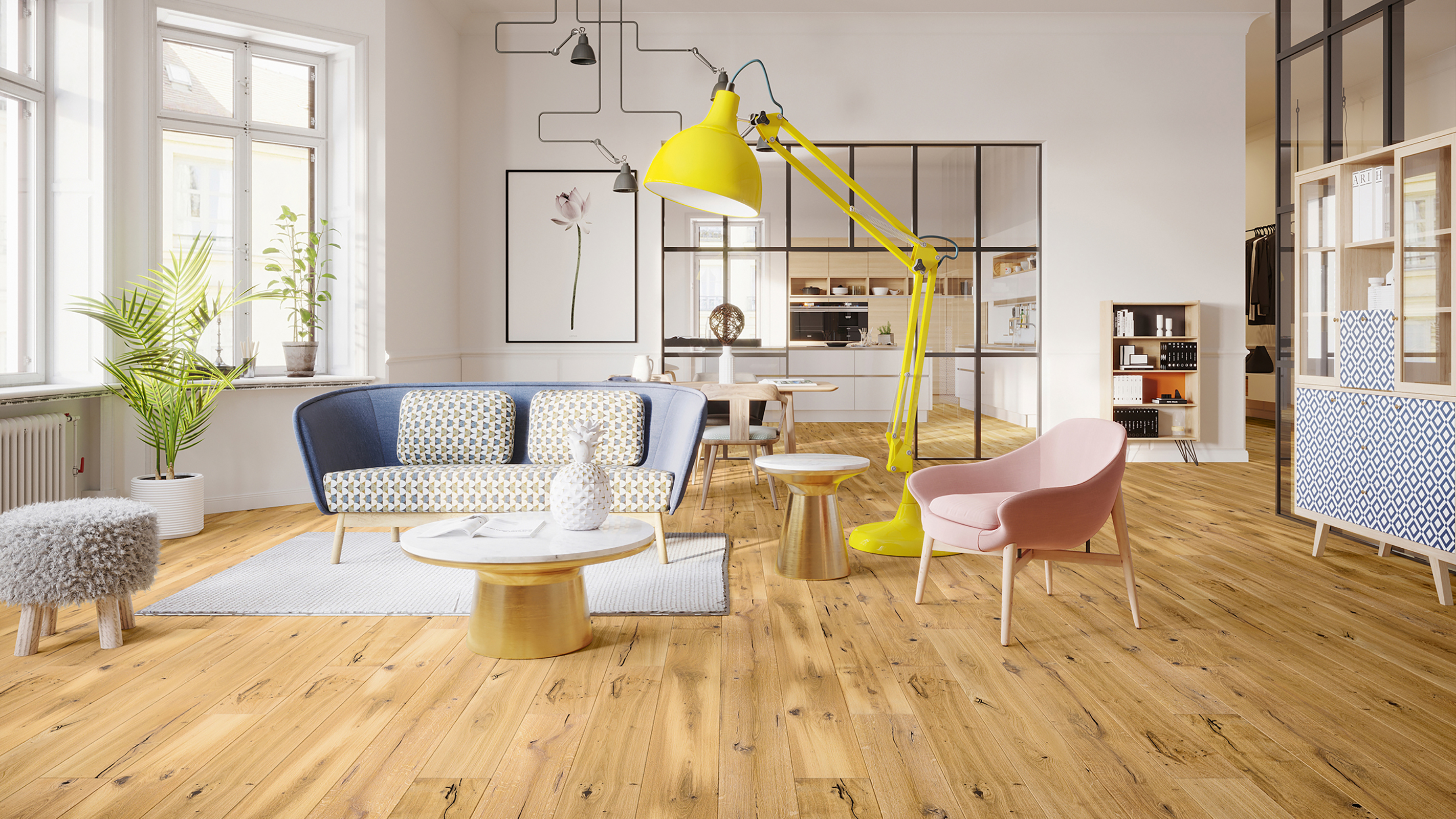
What is the difference between solid and engineered wood flooring?
There are so many different types of wood flooring out there that it can actually be quite daunting when faced with the task of choosing the right one.
Before we get into discussing the pros and cons of wood flooring, it is important to understand the difference between solid wood flooring and engineered wood flooring.
- Solid wood flooring: This flooring comes in boards made from one solid piece of wood. They often have tongue-and-groove edges so boards fit together easily. It is also possible to buy solid wood floors without this tongue-and-groove edge. These are nailed down into your floor joists and give a more rustic, authentic look.
- Engineered wood flooring: Engineered floors are made up of lots of layers, sandwiched together. There is a solid hardwood top layer (the thickness of which will vary depending on the quality of the product), bonded to several thinner layers of softwood, plywood or recycled wood.
Both these types of wooden flooring are great options, sharing the benefit of being suitable over underfloor heating. Whichever you choose, bear in mind that their advantages very much depends on the timber you choose, with hardwoods being more resistant to damage and dents than softwoods.
What are the advantages of wood flooring?
- Can be sanded and refinished to get rid of dents and damage (note that engineered wooden flooring can usually only be sanded once or twice, depending on the thickness of the top layer)
- Massive range of wood species, colours and textures available for all interior design schemes
- Easy to clean
- Gives rooms a real character boost
- Can be fitted on a DIY basis
- Suitable for use with underfloor heating
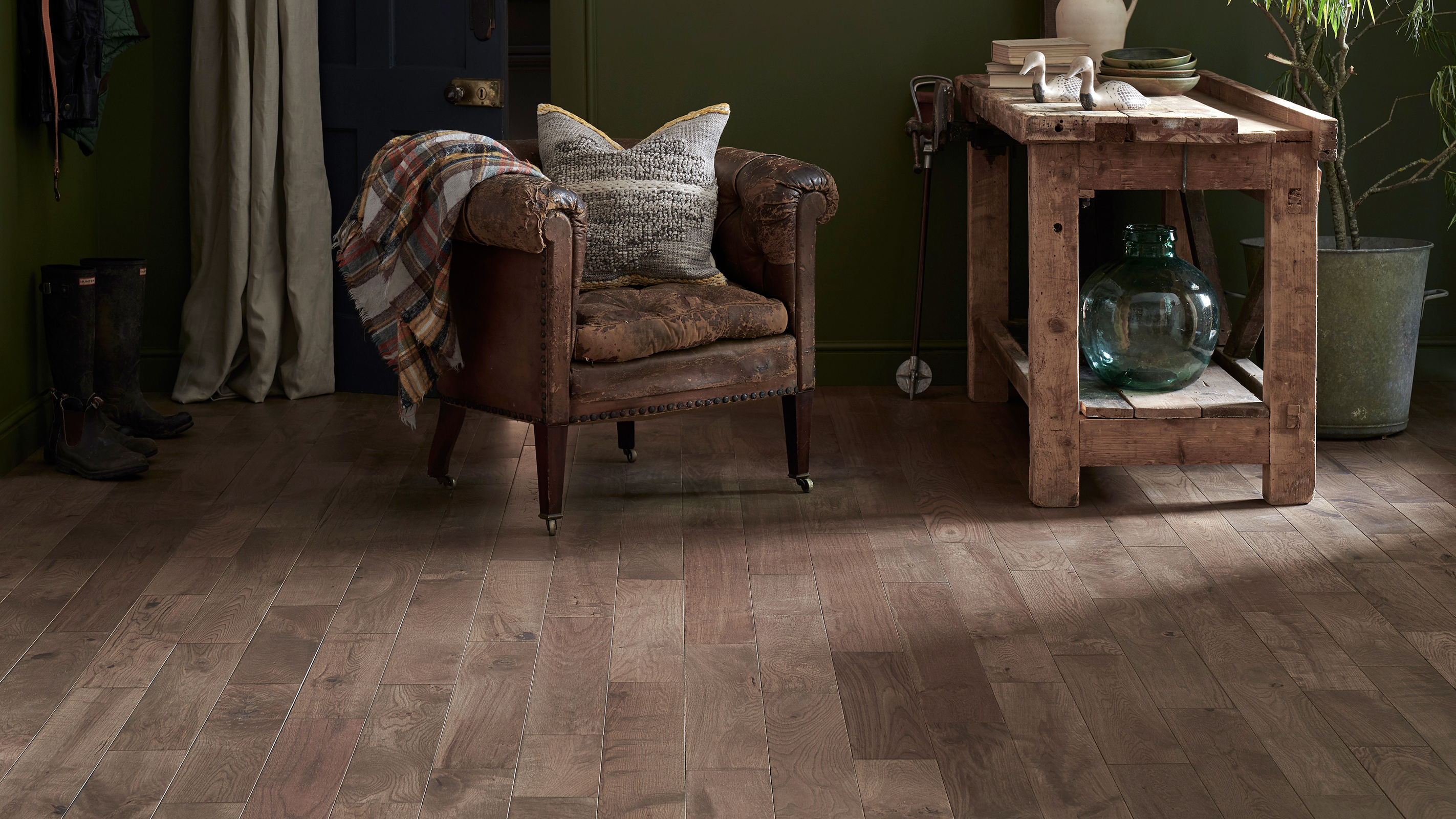
What are the disadvantages of wood flooring?
Of course, just as with any flooring type, there are some downsides to wooden floors. Again, it is important to realise that some of these will be more of an issue when choosing a cheaper product and others will be particular to either engineered or solid flooring.
Cons of solid wood flooring:
- Solid wood flooring can twist and warp (be aware that engineered wood flooring can also be prone to this to a lesser extent). Ensure both types are properly acclimatised before installation to avoid the problem
- If solid wood boards need nailing down, it can be a tricky DIY task
- Some hardwood solid and engineered timber flooring can be very expensive (far more so than laminate)
- Softwood boards can easily be dented by sharp objects
- Unsuitable for wet rooms and shower rooms
What is laminate flooring?
Don't confuse laminate flooring with wood flooring — the wood effect you see is just a top layer featuring a photographic image.
"Laminate is made up of a number of layers: A base layer that provides stability and prevents warping, a core layer that gives strength and flexibility, a décor layer that shows off the design, and the protective layer (a clear melamine resin) that creates a tough durable finish that is resistant to deep scratches and gouging," explain the experts at Lifestyle Floors.
Laminate flooring comes with an AC rating. This indicates how strong and durable it is. The higher the number, the more durable the product.
What are the advantages of laminate flooring?
Laminate flooring has come on in leaps and bounds in recent years, and where it was once seen as a bit of a quick fix or for those on a very tight budget, it is now a viable choice for anyone after a long-lasting and low-maintenance floor covering, providing you buy a good quality product.
"Laminate flooring is an old faithful in the flooring world," says Craig Smith, Merchandising Manager at Flooring Superstore. "Laminate is a go-to for a great flooring that does the job. It’s the perfect cost-effective alternative to real wood flooring."
So, what benefits can you expect if you opt for laminate as opposed to wood flooring?
Pros of laminate flooring:
- Very durable (opt for one with a high AC rating — AC5 is a good bet)
- Affordable
- Quick and easy to install
- Suitable for use over underfloor heating
- Waterproof products available
- Large range of wood, stone and tile effects
- Easy to clean and maintain
Cons of laminate flooring:
- Can't be sanded or refinished if damage occurs
- Can sometimes become slippery if wet, especially if you choose one with a low AC rating
- Can lack the charm and warmth offered by wood flooring so not always suitable for classic or traditional interiors. "Although the appearance is similar to wood and manufacturing techniques have come a long way, you can tell when up close that laminate flooring is not real wood," says Craig Smith. "It does not have the same depth or character as wood flooring."
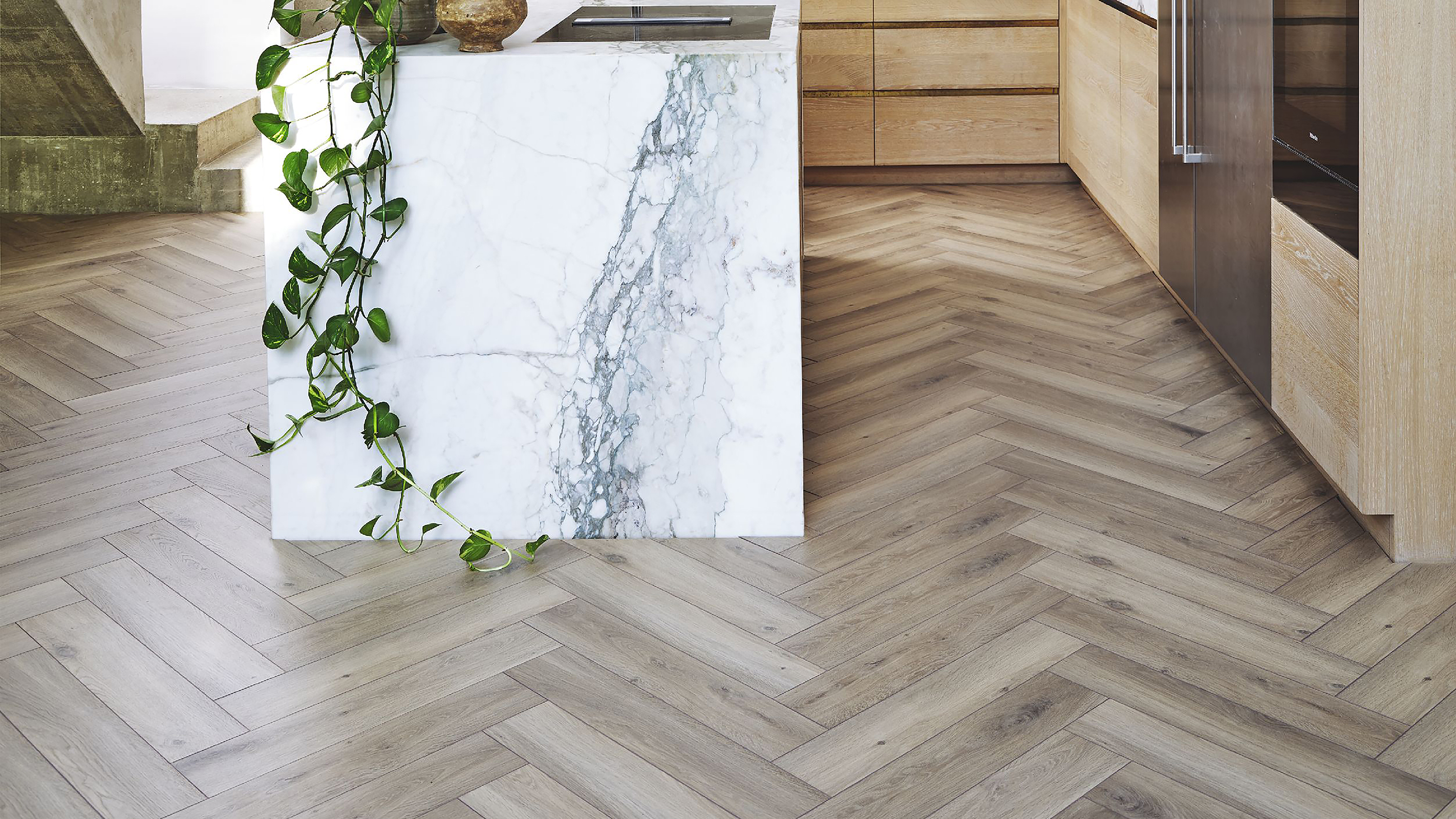
What is the best flooring for bathrooms, wood or laminate?
When it comes to choosing bathroom flooring, although both wood and laminate can, in theory, be used, it pays to do your research on the suitability of the products you are interested in.
When looking at the suitability of wood flooring in the bathroom, engineered flooring wins hand down every time over solid. It is more stable and far less prone to movement under humid and moist conditions. That said, if you are looking for flooring for a family bathroom where lots of splashes and spills are expected, you will be better off opting for a hard flooring type such as tile or stone.
One of the most common questions by those on the hunt for bathroom flooring is 'Is laminate waterproof?' Although many people consider laminate as a bathroom flooring option, do bear in mind that not all laminate will be suitable — you need to choose waterproof laminate. With these products, the joints between the boards or tiles is given a water repellent coating and the boards will usually be made from 'swell resistant' materials.
In short, providing water isn't left to pool for any period of time on either laminate or engineered flooring, they can be used in bathrooms. However, if you are concerned, you may well be better off opting for luxury vinyl flooring, tiles or natural stone instead.
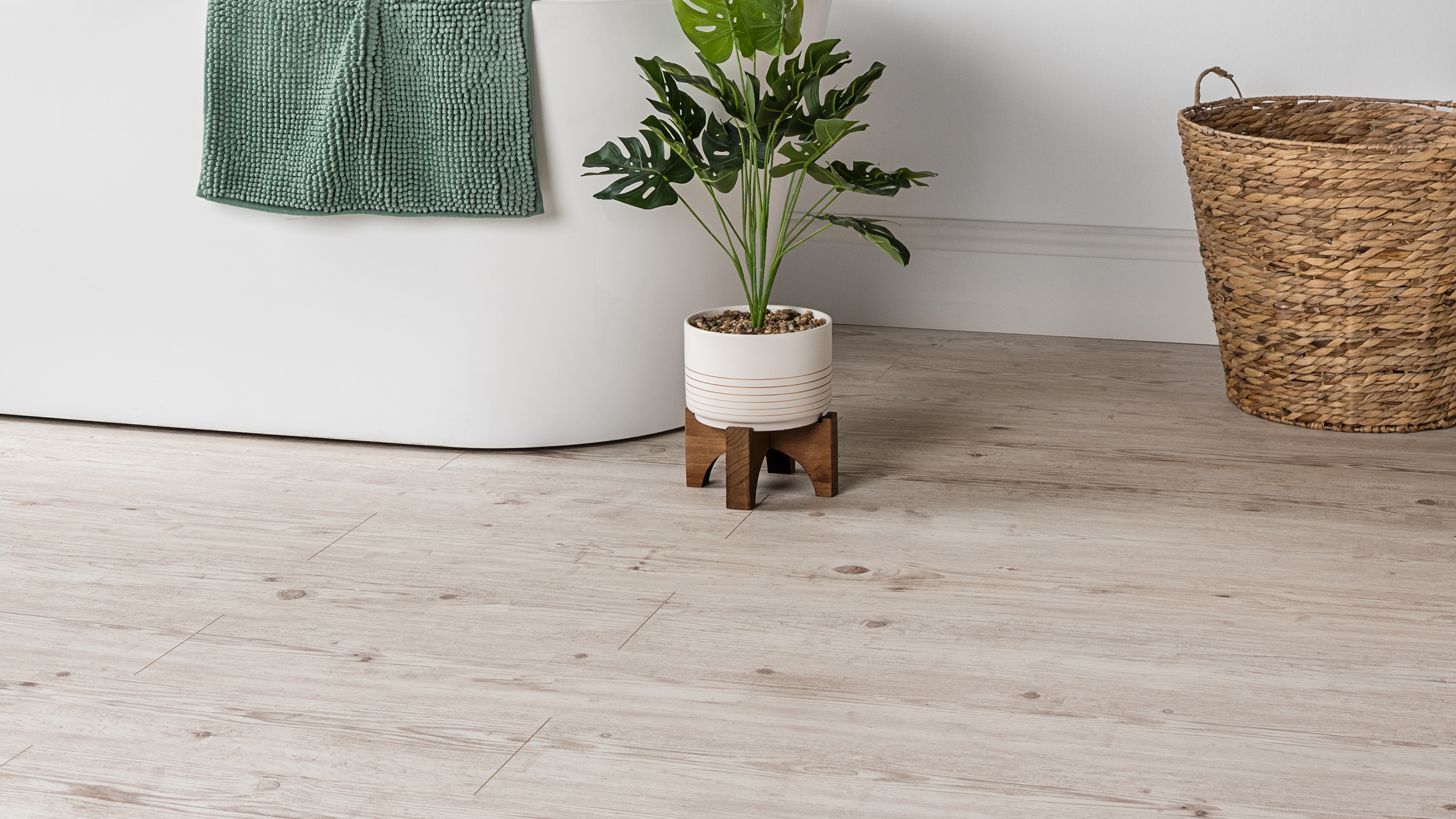
Is wood flooring more expensive than laminate?
What you pay for your wood or laminate flooring will obviously very much depend on the type of product you opt for, its quality and how much you require.
Obviously buying reclaimed wood flooring or a specialist type of timber will cost much more than if you were to opt for one of the cheaper laminates around. That said, overall, wood flooring will cost more than laminate.
"The cost of wood flooring, especially hardwood flooring, is the most common reason people choose other types," says Craig Smith. "It can be expensive compared to different flooring options, including laminate flooring."
In order to get an idea of the kind of costs you can expect, take a look at the following:
- Solid timber flooring costs: Between £35/m² - £120/m²
- Engineered wood flooring costs: From £30/m² up to £90/m² or more
- Reclaimed wood flooring costs: From £40/m² for unrestored boards up to £350/m² for antique hardwoods, finished to a high standard.
- Laminate flooring costs: From £6/m², up to £25/m², or as high as £60/m² for top quality products
Get the Homebuilding & Renovating Newsletter
Bring your dream home to life with expert advice, how to guides and design inspiration. Sign up for our newsletter and get two free tickets to a Homebuilding & Renovating Show near you.
Natasha was Homebuilding & Renovating’s Associate Content Editor and was a member of the Homebuilding team for over two decades. In her role on Homebuilding & Renovating she imparted her knowledge on a wide range of renovation topics, from window condensation to renovating bathrooms, to removing walls and adding an extension. She continues to write for Homebuilding on these topics, and more. An experienced journalist and renovation expert, she also writes for a number of other homes titles, including Homes & Gardens and Ideal Homes. Over the years Natasha has renovated and carried out a side extension to a Victorian terrace. She is currently living in the rural Edwardian cottage she renovated and extended on a largely DIY basis, living on site for the duration of the project.

